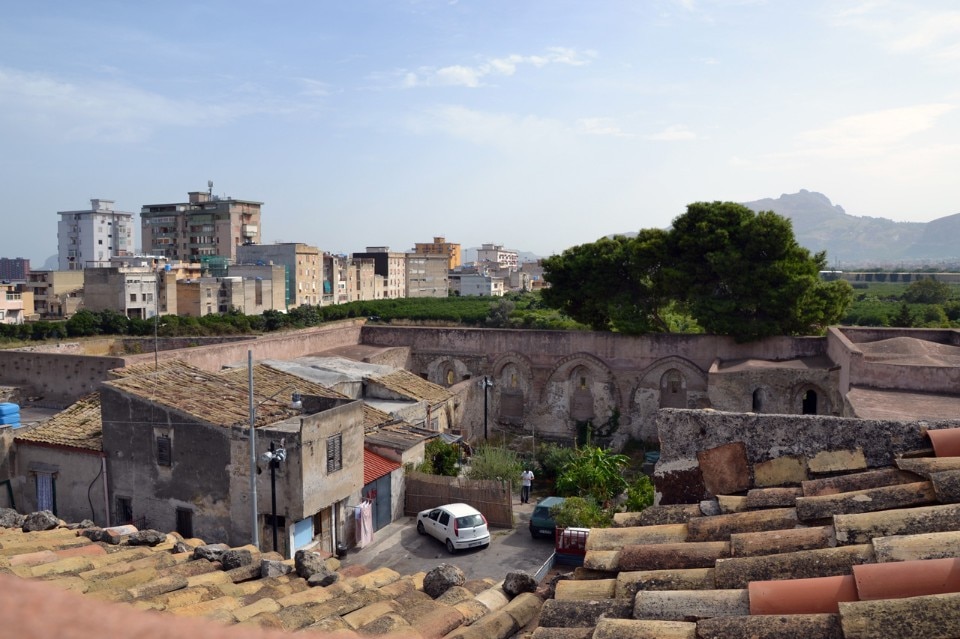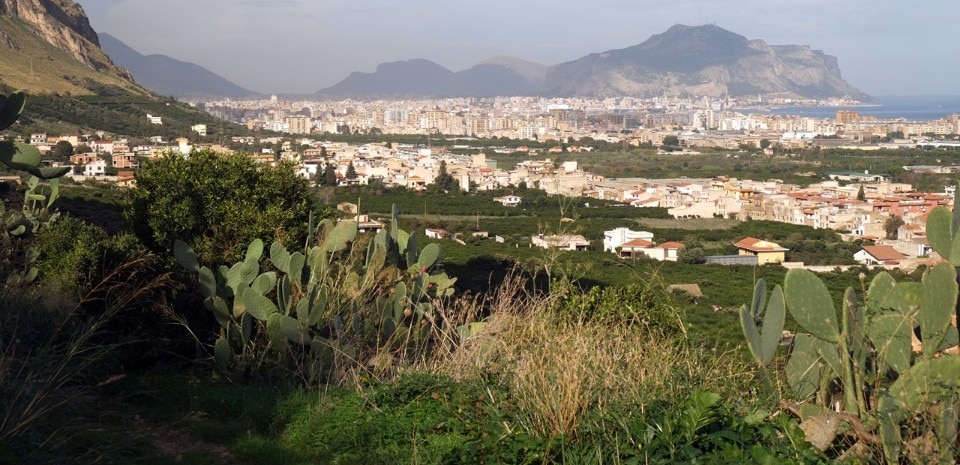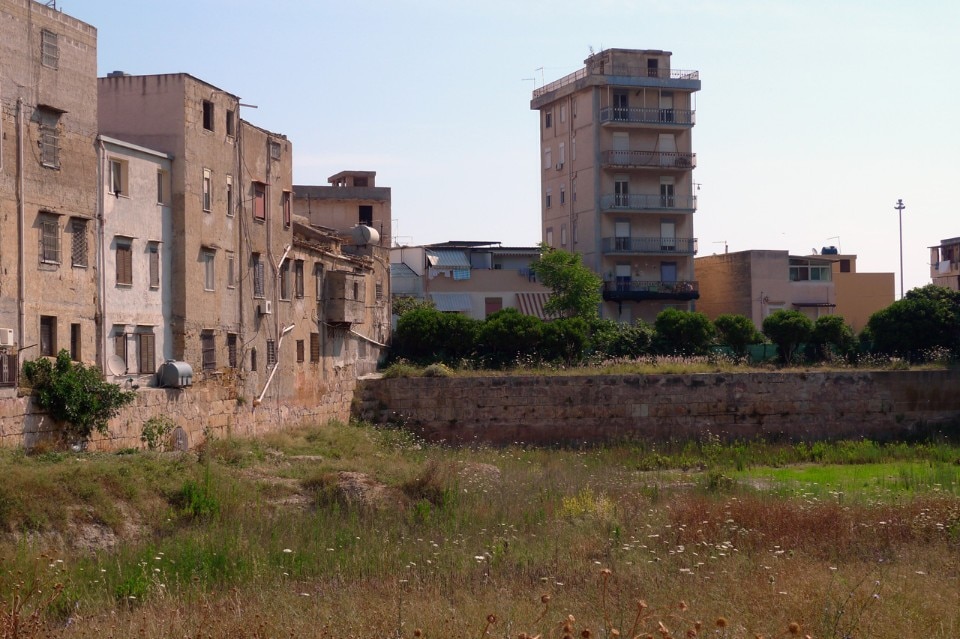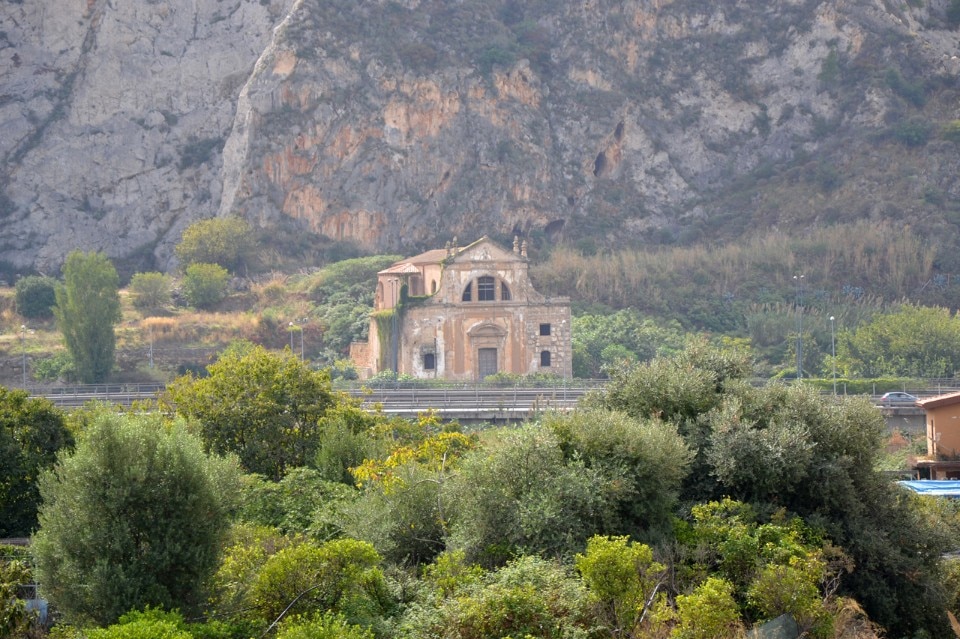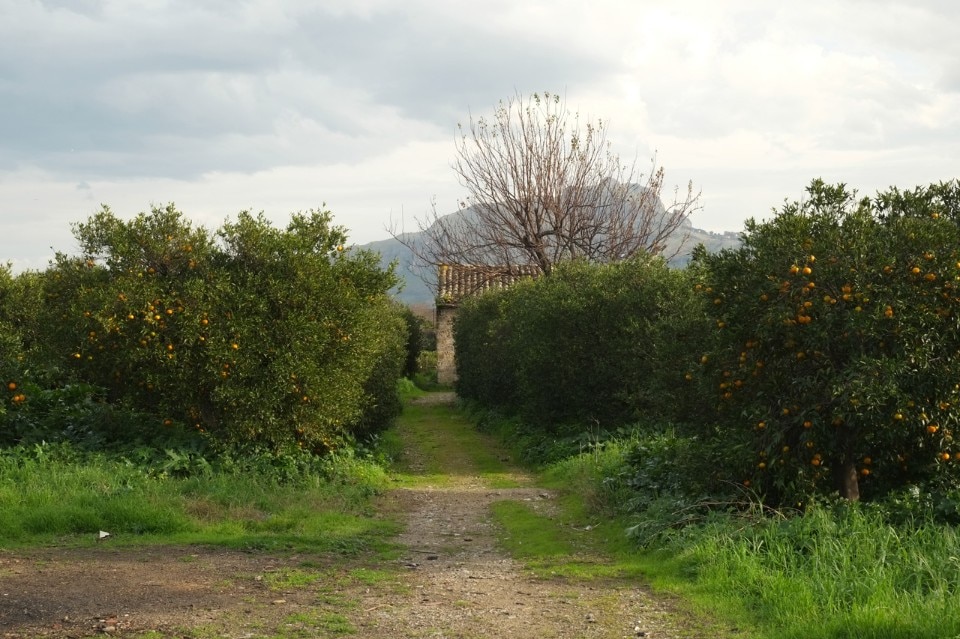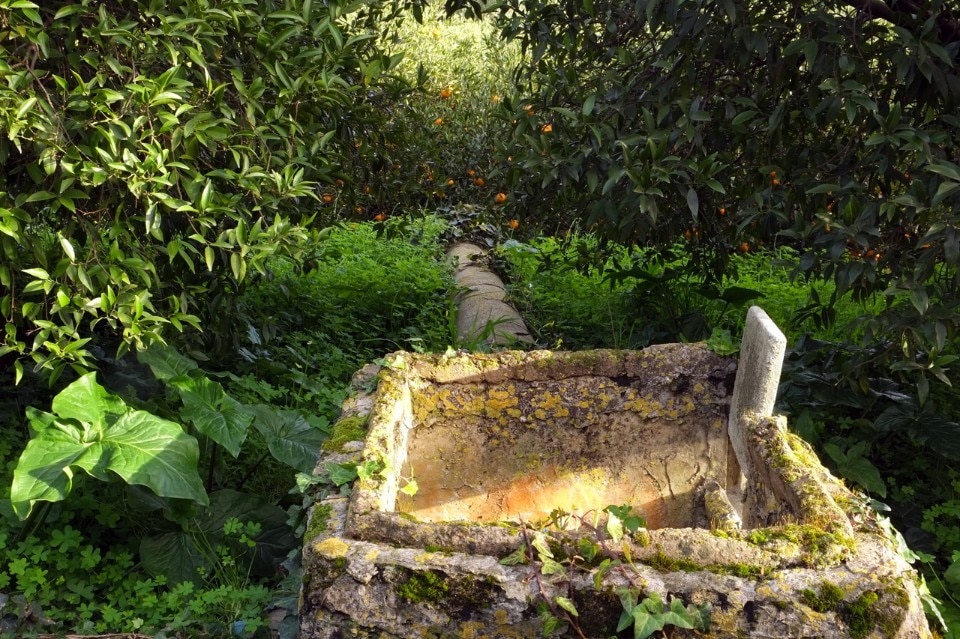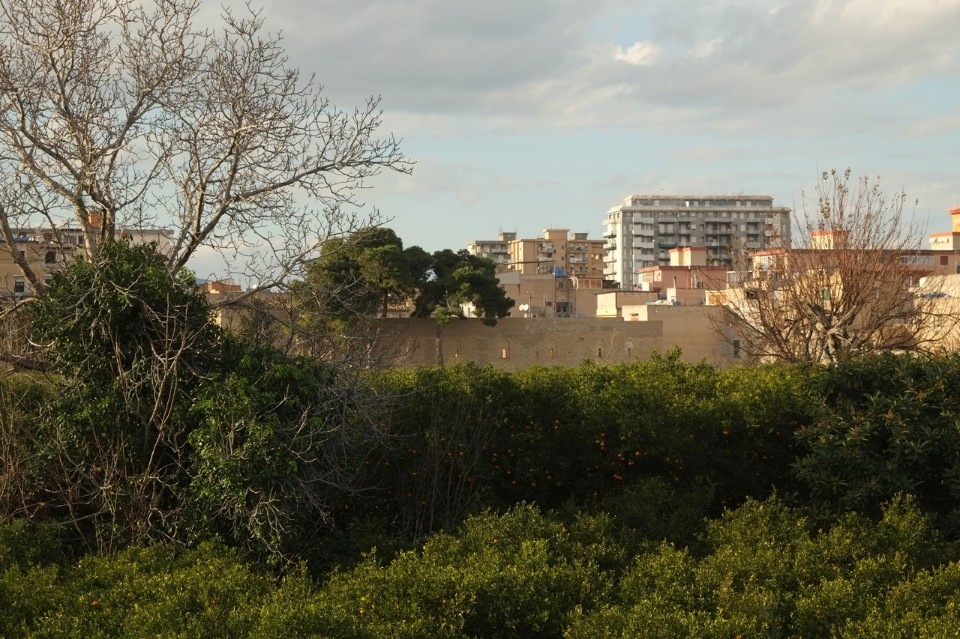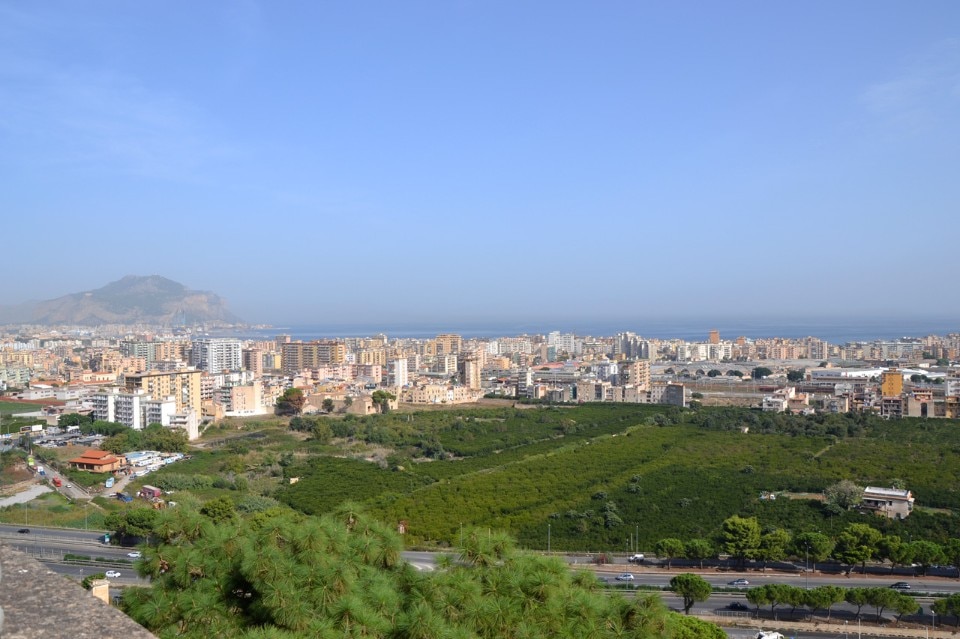
Maredolce-La Favara is today a vast depression in the ground, what in the past was a huge reservoir, with a still recognisable, irregularly shaped island at its centre and a magnificent palace standing on the edge of this concavity with ranks of recently-built houses close by on two sides.
Within the hollow, an area covering about twenty-five hectares contains a complex system of structures, hydraulic devices and an enormous citrus orchard, as well as the Norman palace.
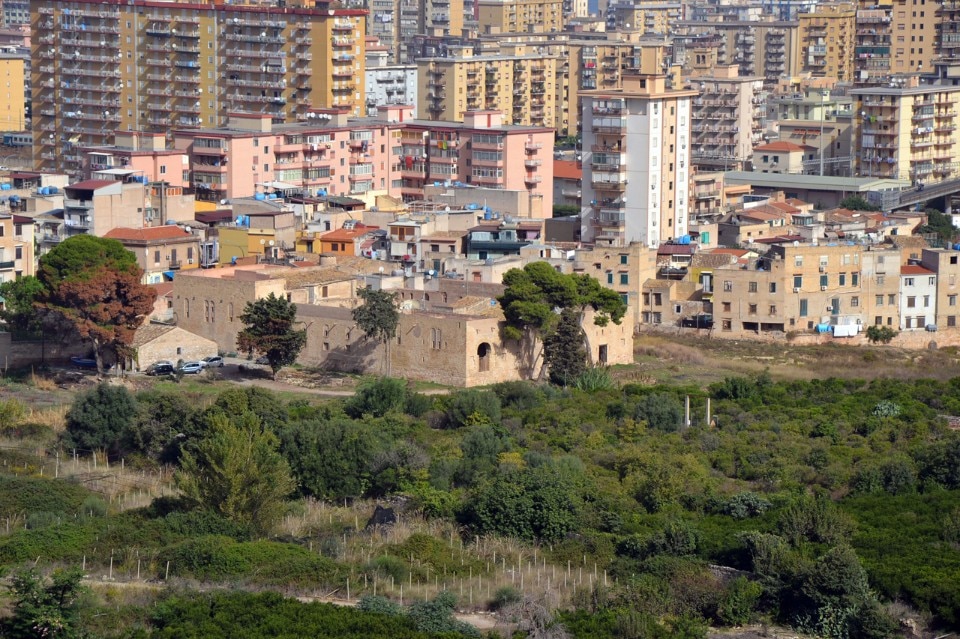
For a considerable time forgotten in topographical descriptions and no longer perceptible to its inhabitants, Maredolce seems nevertheless to be holding out despite its now discontinuous perimeter, like the head of a wedge retaining the space it occupies in the tangle of old and new roads in the outskirts of a city that has sprawled right up to its verges.
In Maredolce we recognize the outposts of a close-knit spray of surviving landscapes beyond the River Oreto between the slopes of Mount Grifone, the roads of Ciaculli and the coast, a striking patchwork of cultivated land which is all that remains of the Conca d’Oro, and which here take the name of “garden”.
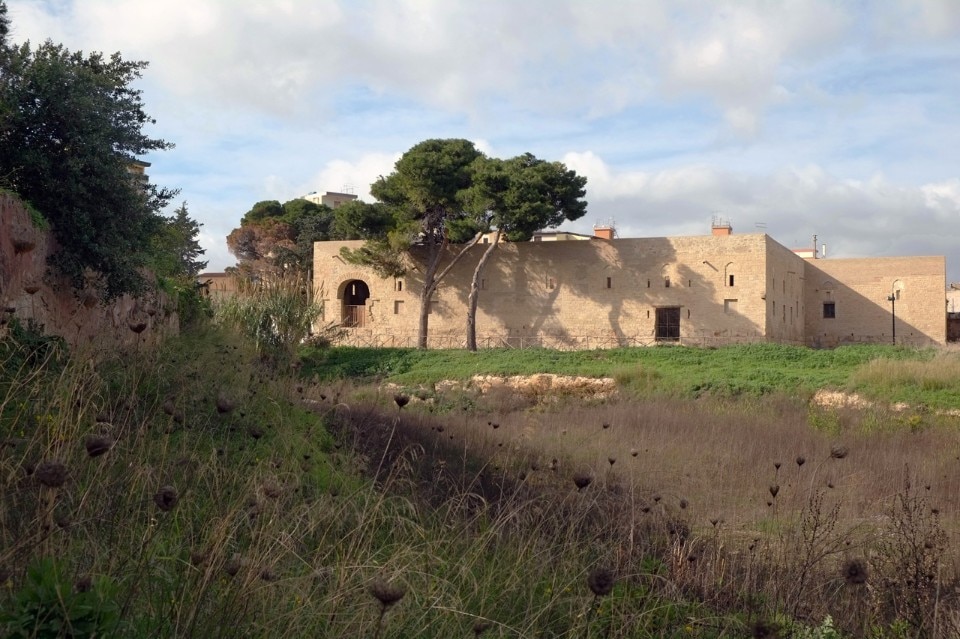
This landscape bears the marks of history and hints of a positive change in a social milieu that was formerly “condemned” to unsparing censure: Ciaculli and Brancaccio are districts connected with unspeakable crimes such as those associated with the “mafia dei giardini” and the heroin refineries, but they were also home to anti-mafia heroes such as Father Pino Puglisi.
The Carlo Scarpa Prize is hopeful of a possible resolution between the life of this neighbourhood and a far-sighted vision in which the city recognizes the signals here of a reconciliation between the contradictions of recent urban development and the living presence of its historic landscapes.
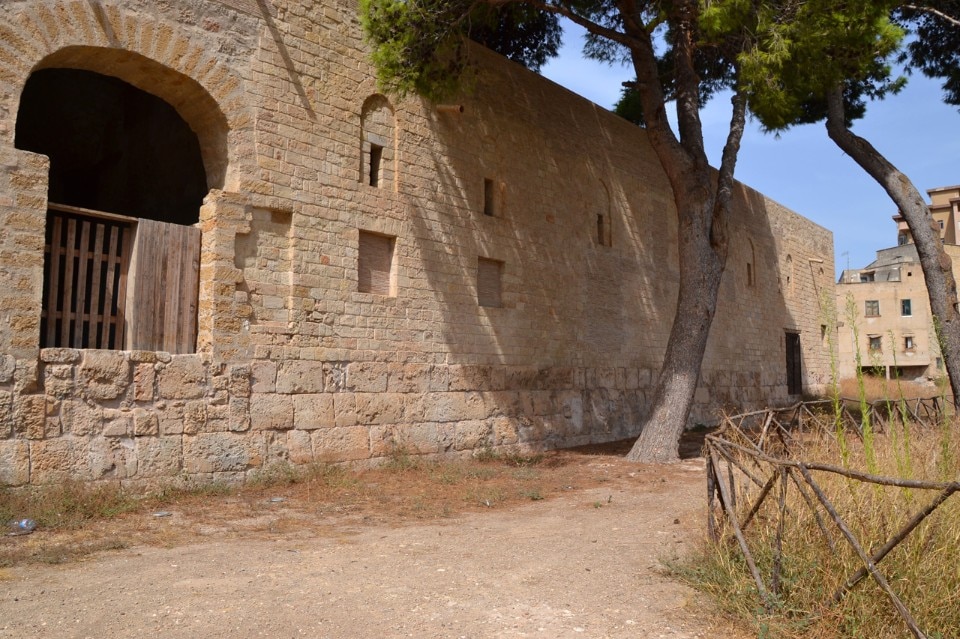
Maredolce awaits recognition and placing in a wider context that reveals its full significance and rediscovery of the link between what has been saved, what is still to emerge, and the life, no longer indifferent, of the community around this place.
Outstanding amongst those now working for Maredolce-La Favara is the working group set up by the Superintendency of the Cultural and Environmental Heritage of Palermo, under the guidance of Maria Elena Volpes, to which the Scientific Committee of the Foundation expresses its profound appreciation of the experience and commitment it brings to the task, in recognition of which it has decided to entrust the group’s coordinator, Lina Bellanca, with the Carlo Scarpa Seal as a token of affinity and support for all those who, in their different fields, are working in a far from easy urban and social context to underline the importance of a public good in ongoing need of care, attention and defence of the exceptional values and diversity it continues to embody.
